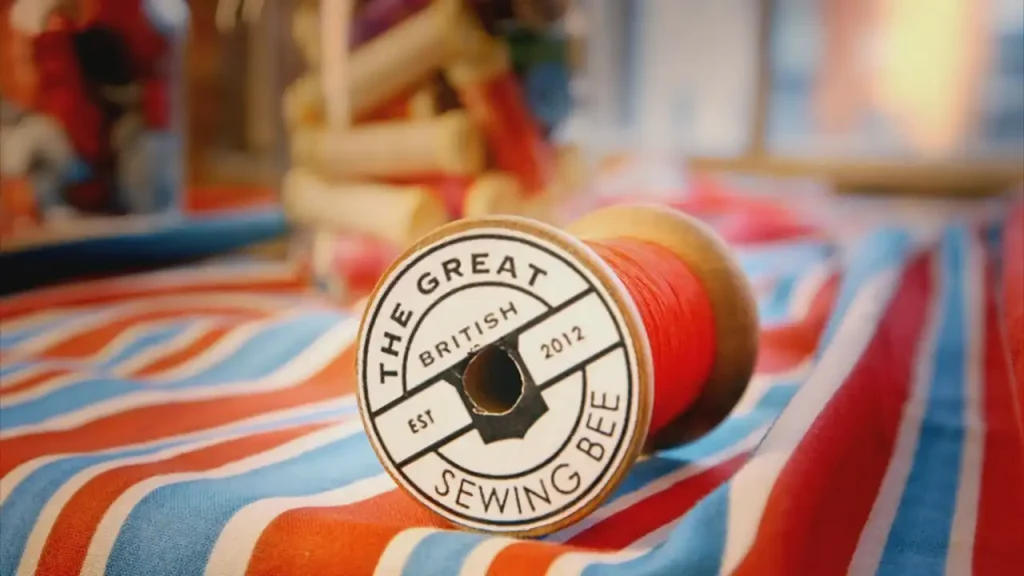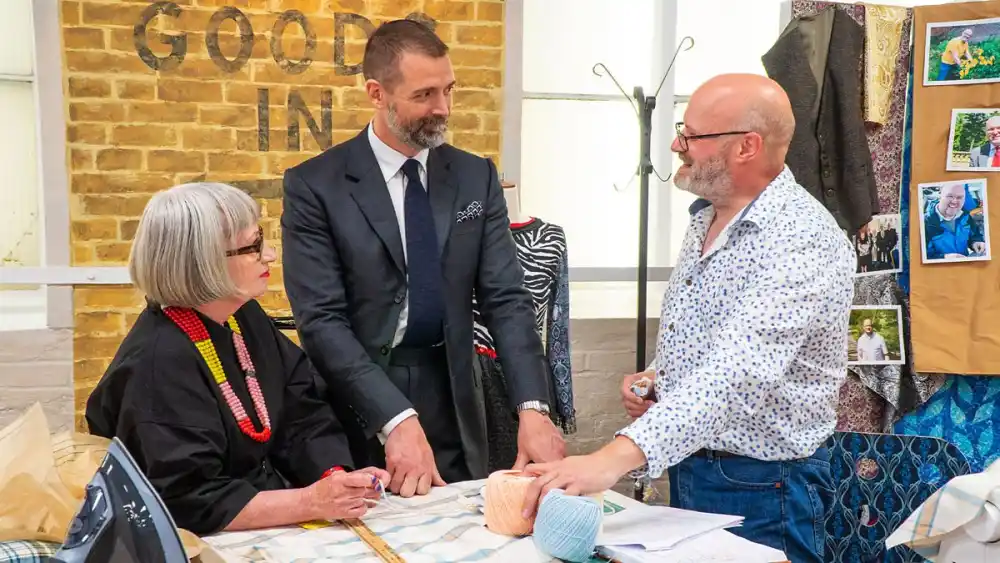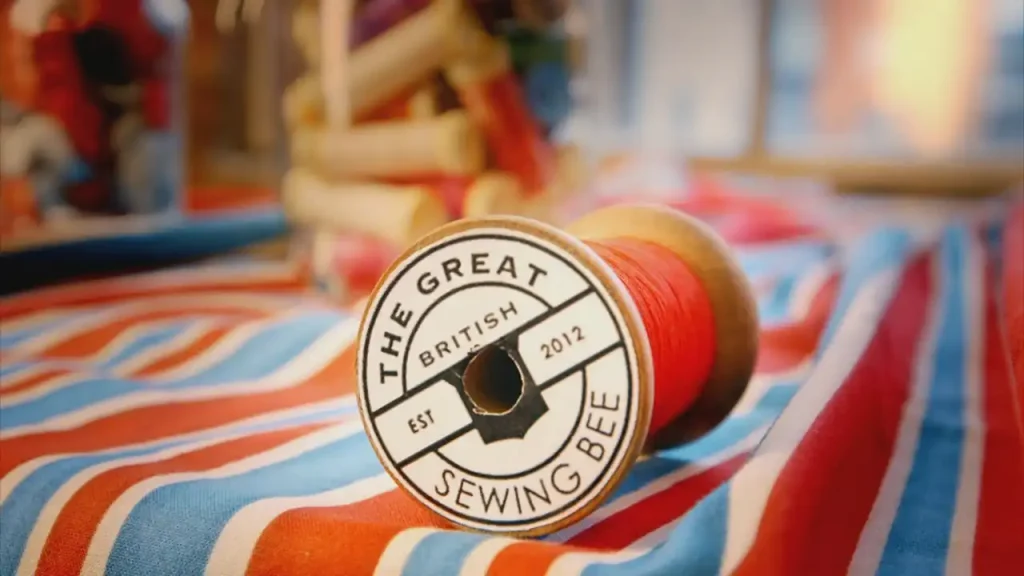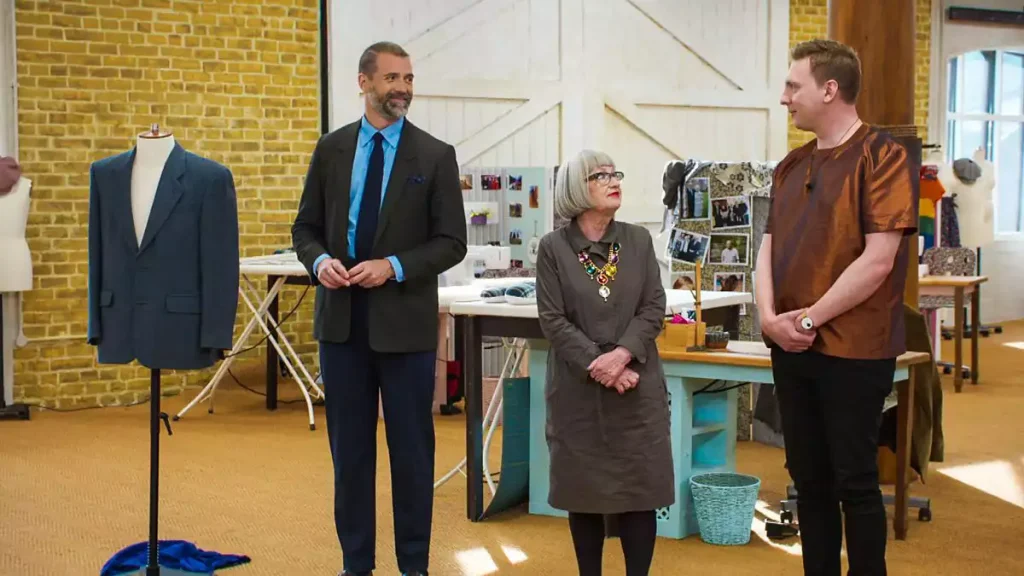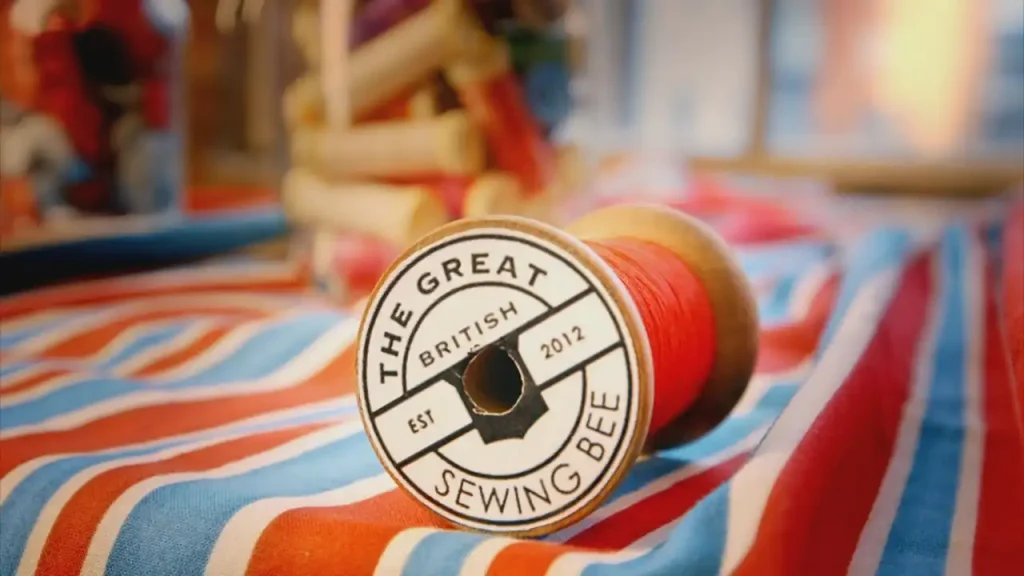The Great British Sewing Bee episode 9 2021 – Step into the world of vintage fashion as Joe Lycett takes on the hosting duties for the thrilling semi-final of The Great British Sewing Bee. The remaining four talented sewers embark on a captivating journey back in time, immersing themselves in the elegance and frugality of the 1940s fashion era. With a mission to revive the glamorous and innovative styles of that decade, they prepare to tackle some of its most iconic and challenging garments.
Guided by the discerning eyes of judges Patrick Grant and Esme Young, the sewers face their first daunting task: recreating the 1940s’ most famous trousers, the Oxford bags. These wide-legged trousers, perfect for dancing the jitterbug and swing, prove to be no easy feat. Dealing with oversized pattern pieces, intricate fly zips, and a waistband featuring pleats to accommodate the extra width, the sewers must demonstrate their technical prowess to master this classic style.
Next up is the Transformation Challenge, where the sewers are presented with a truly wartime test of creativity and resourcefulness. Armed with old parachutes, they must breathe new life into these utilitarian items, transforming them into glamorous and chic dresses. It’s a leap of faith, and only the most imaginative and skilled contestants will succeed in this endeavor.
The pinnacle of the semi-final lies in the Made to Measure challenge, where the sewers are tasked with recreating one of the most influential fashion trends of the 1940s: Dior’s New Look. Known for its striking hourglass silhouette and the lavish use of fabric, this style requires the sewers to accentuate their models’ figures and create the iconic shape that defined an era. The pressure is on, and each stitch becomes a testament to their dedication and artistry.
As the competition intensifies, the sewers strive to impress and claim the coveted title of Garment of the Week. Yet, for one unlucky contestant, 1940s week may mark the end of their journey as they bid farewell to The Great British Sewing Bee, leaving behind an indelible mark on the sewing room and the memories of their fellow competitors.
The excitement is palpable, the stakes are higher than ever, and as the sewing machines hum with determination, the question lingers: Who will rise above the rest, securing their place in the grand finale, and who will have to say their goodbyes, knowing they’ve stitched their very best in this nostalgic trip down fashion’s memory lane? Only time will tell in this captivating and unforgettable chapter of The Great British Sewing Bee.
The Great British Sewing Bee episode 9 2021
Step into the World of Vintage Fashion with The Great British Sewing Bee
The thrilling semi-final of The Great British Sewing Bee brings us a captivating journey back in time to the 1940s as the remaining four talented sewers embark on a nostalgic trip down fashion’s memory lane. Guided by hosts Joe Lycett and judges Patrick Grant and Esme Young, the contestants face challenges designed to test their skills in recreating some of the most iconic garments of this influential era in style.
Reviving the Oxford Bags
The first daunting task awaiting the sewers is recreating one of the most famous trousers of the 1940s – the billowing, wide-legged Oxford bags. These trousers, exaggerated in their proportions with a voluminous fit through the legs and a pleated waistband, were a staple of the jazz era, perfect for dancing the jitterbug and swing.
Despite their balloon-like appearance, the Oxford bags prove to be no easy feat to construct. The oversized pattern pieces challenge the sewers’ precision, while the intricate fly zip and pleated waistband test their technical expertise. Meticulous measuring, marking, cutting, and stitching are required to translate these larger-than-life trouser shapes onto their models. Each sewer must demonstrate mastery of proportion, fit, and tailoring to successfully recreate this classic 1940s style.
As the clock counts down, the sewers race to perfect their Oxford bags. For some, working with the unfamiliar wide dimensions pushes their skills to the limit. Any miscalculations are glaringly obvious in the final garment. Though daunting, this first challenge provides an enlightening glimpse into the ingenious patterns and silhouettes of 1940s fashion.
Transforming Parachutes into Dresses
Following the Oxford bags, the Transformation Challenge awaits, calling upon the sewers’ creativity and resourcefulness with a true wartime test. They are presented with materials ubiquitous during the 1940s – parachutes, signaling the frugality and make-do attitude prevalent at the time.
Faced with the challenge of turning these parachutes into stylish dresses, the sewers must envision how to transform these functional items into something sartorially beautiful. It’s an exercise in radical imagination, dedicating meticulous thought to pattern shapes, seaming, and accents to elevate the parachutes from utilitarian to chic.
This leap of faith pushes the sewers outside their comfort zones. Each choice of how to fashion these spherical parachutes into figure-flattering dresses is an experiment, requiring skill and nerve in equal measure. Accommodating full skirts, fitted bodices, and even cascading trains, some sewers choose to retain the parachute’s original form, while others opt for bold cuts and folds transforming them beyond recognition. It’s a test of tenacity culminating in daring creations and ingenious artistry.
Mastering Dior’s New Look – The Great British Sewing Bee episode 9 2021
The pinnacle of the semi-final lies in the Made to Measure challenge – creating an original dress capturing the essence of Dior’s iconic New Look. This landmark style revolutionized the 1940s fashion landscape with its striking silhouette defined by a cinched waist, exaggerated bust, and lavish volumes of fabric flowing into a full skirt.
To recreate a garment evoking this era-defining shape, the sewers must become masters of precision and proportion. Accentuating their models’ natural figures through strategic darting and boning, they sculpt the exaggerated curves that captured the romanticism and extravagance of mid-century fashion.
Every seam, pleat, and hem becomes an opportunity to pay homage to Dior’s vision. Swathes of luxurious fabric are handled with care and purpose to create the dramatic, hourglass contours. As their designs take shape, the spirit of the 40s is brought to life with every line and angle.
With the clock counting down, the sewers race to perfect their creations, striving to impress while capturing the élan vital of Dior’s revolutionary style. The final runway provides a dazzling display of 40s-inspired fashion, blending nostalgia with enduring charm.
The Quest for Garment of the Week
Throughout the challenges, the sewers have their eyes on the coveted Garment of the Week award, putting their skills on display to impress judges Patrick and Esme. Meticulous execution, innovative repurposing, and homages to iconic 1940s silhouettes all contribute to be named the best garment.
For the sewers who achieve this honor, it is a triumphant recognition of their technical prowess and profound understanding of mid-century style. Their abilities to marry historical inspiration with customization sets them apart.
Meanwhile, the specter of elimination looms large. Each misstep and imperfect detail threatens to end one sewer’s journey. As pressure mounts, nerves are tested along with talents. The judges’ discerning gaze misses no flawed finish or uneven hem.
By the final runway, emotions run high. For the sewer hearing their name called as Garment of the Week, elation and gratitude. For the contestant asked to leave the sewing room, heartbreak mingled with pride at having made their mark.
Preserving the Past while Advancing into the Future
As we look back at the captivating fashion of the 1940s through the lens of The Great British Sewing Bee, it’s clear this era’s pioneering styles still resonate today. The sewers’ stunning original creations pay homage to the period’s couturiers and culture.
By recreating iconic designs and experimenting with repurposed materials, this semi-final episode offered an illuminating time capsule of a revolutionary fashion period. It demonstrated how historic inspiration can be balanced with customization and personal expression.
Above all, this nostalgic chapter exemplified the skill and artistry passed down through generations of sewers. Though styles may change, excellence in technique and craft endures. The Great British Sewing Bee continues to celebrate this lineage of creativity and mastery.
As the competition progresses to its grand finale, we eagerly anticipate what stunning feats of ingenuity the remaining sewers will demonstrate next, carrying on the heritage honed by their forebears. They have set the stage for future aspirational sewers who will add their own chapters to this story of imagination, expertise, and bespoke beauty.
Conclusion
The Great British Sewing Bee’s semi-final of vintage-inspired challenges provided an enthralling glimpse back at 1940s style. As the sewers revived iconic designs like the Oxford bags, transformed parachutes into dresses, and recreated Dior’s New Look, they honored fashion history while demonstrating their own creativity and expertise.
This nostalgic trip into the style of the past was a reminder of the enduring legacy of quality craftsmanship and the promise of innovation for the future. The sewers’ stunning work inspires viewers to appreciate how fashion continuously evolves by building on its rich heritage. Their ability to master both historical techniques and forward-thinking customization makes each piece at once a preservation of the past and a vision of things to come.
Above all, this semi-final celebrates the community and continuity embodied by the art of sewing. Though individual contestants must say goodbye, the skills they represent persist to be passed on. Each stitch is a thread through time, connecting generations united by a common love of fabric and form. As long as this passion remains, the stories fashion tells will never fade. The rich history honored here sets the stage for future creativity limited only by the imagination.
FAQ – The Great British Sewing Bee episode 9 2021
What are some key features of 1940s fashion?
Some iconic 1940s fashion trends include wide, pleated trousers called Oxford bags, fitted tops with padded shoulders, elegant tea dresses with cinched waists and full skirts, turbans and snoods, red lipstick, peep toe heels, and luxurious fabrics like satin and lace. Overall, 40s style balanced utilitarian wartime sensibilities with glamour and femininity.
How did World War 2 influence 1940s fashion?
Wartime rationing led to more simple, minimalist 1940s fashion with restrained use of fabric and adornments. Clothing was designed to be practical and versatile. The “make do and mend” ethos encouraged creative reuse of clothing and textiles, like parachutes repurposed into dresses.
What was Christian Dior’s New Look?
Dior’s New Look debuted in 1947 and featured a voluminous skirt using abundant yards of fabric, a cinched waist, exaggerated bust, and sloped shoulders for an ultra-feminine hourglass silhouette. It revolutionized fashion, moving away from wartime austerity towards luxury.
Who were the key designers of the 1940s?
Notable 1940s designers included Christian Dior, Cristóbal Balenciaga, Hattie Carnegie, Claire McCardell, Elsa Schiaparelli, Chanel, Madame Grès, and Gilbert Adrian. Many creatively worked within wartime rationing restrictions.
What sewing skills are most important for historical fashion?
Precision patterning, cutting, and stitching are essential to accurately recreate historical silhouettes. An understanding of proportion, fit, and fabric behavior is crucial. Creativity and resourcefulness help transform vintage-inspired ideas into wearable modern garments.
How can I learn more about 1940s fashion?
Visit museums, watch films from the era, study photo archives, read fashion history books, collect sewing patterns, follow historical costumers, and practice sewing key garments like Oxford bags, tea dresses, and suits. Immersing yourself in 1940s culture is invaluable inspiration.
